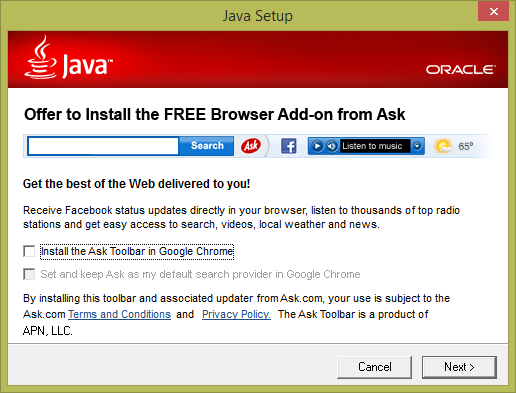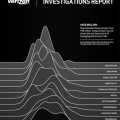The people at howtogeek.com wrote a pretty funny yet sad post about research they performed. The concept is they went to download.com and downloaded the top 10 most popular downloads onto a virtual windows system to see what would happen (they skipped a few Anti Viruses since it doesn’t make sense to install more than one but outside of that went through the list). As shown in the previous screenshot, most of the software was laced with malware pretty much killing the functionality of their test system. The ironic thing is download.com has disclaimers on their website stating they don’t post software with malware, trojans or malicious adware before during or after the installation of software being shared (shown later in the post). According to the results from the howtogeek team, this is obviously not the case. I guess those old sayings are right about nothing is free and if its too good to be true … it probably is.
My personal advice is always read the fine print and just don’t click anything while installing software. A lot of the malware and adware shown in this post has options to opt out. This obviously won’t protect you from installing junk software however at least you could avoid adware in situations where you need to install a plugin that attempts to give you a little extra something something you really don’t need. The next image is an example of installing a java update and having a adware browser toolbar being introduced during the installation. At least most legitimate software gives you a chance to avoid the junkware as long as you uncheck the boxes during the install.
Below is the first part of the post. The entire original post can be found HERE. From howtogeek.com …..
We installed the top 10 apps from Download.com, and you’ll never believe what happened! Well… I guess maybe you might have a good guess. Awful things. Awful things are what happens. Join us for the fun!
We’ve been railing against freeware download recommendations for years, and recently we taught you how to test any software safely using a virtual machine. So we thought, why not have some fun and see what reallyhappens if you download software like a regular clueless user might?
For the purpose of this experiment, we’re going to just click through all regular installation screens with the default options using a fresh virtual machine. And we’re going to install ten applications from the most popular downloads list. And we’re going to assume the persona of a regular non-geek user.
Why would we choose Download.com? Because their policies page states clearly that they do not allow malicious software on the site, and further that they do NOT accept any software that contains the following:
Software that installs viruses, Trojan horses, malicious adware, spyware, or other malicious software at any point during or after installation.
Software that installs without notice and without the user’s consent.
Software that includes or uses surreptitious data collection.
Software that diverts or modifies end users’ default browsers, search-engine home pages, providers, security, or privacy-protection settings without the users’ permission.
Software that installs in a concealed manner or denies users an opportunity to read the license agreement and/or to knowingly consent to the installation.
Software that induces installation by making false or misleading claims about the software or the software publisher.
I mean, with all those protections in place from the trusty people over there at CNET, why would anybody worry? I mean, CNET News is a trusted source, right? Right.
Danger! Do NOT Try This at Home!
Seriously, we don’t recommend doing this at home on your primary PC, unless you want to make your computer a smoking pile of useless. If you do want to try it, make sure to use a virtual machine.
Time to begin. But where to begin?
Go to the full post HERE to see what happened.




